Introduction
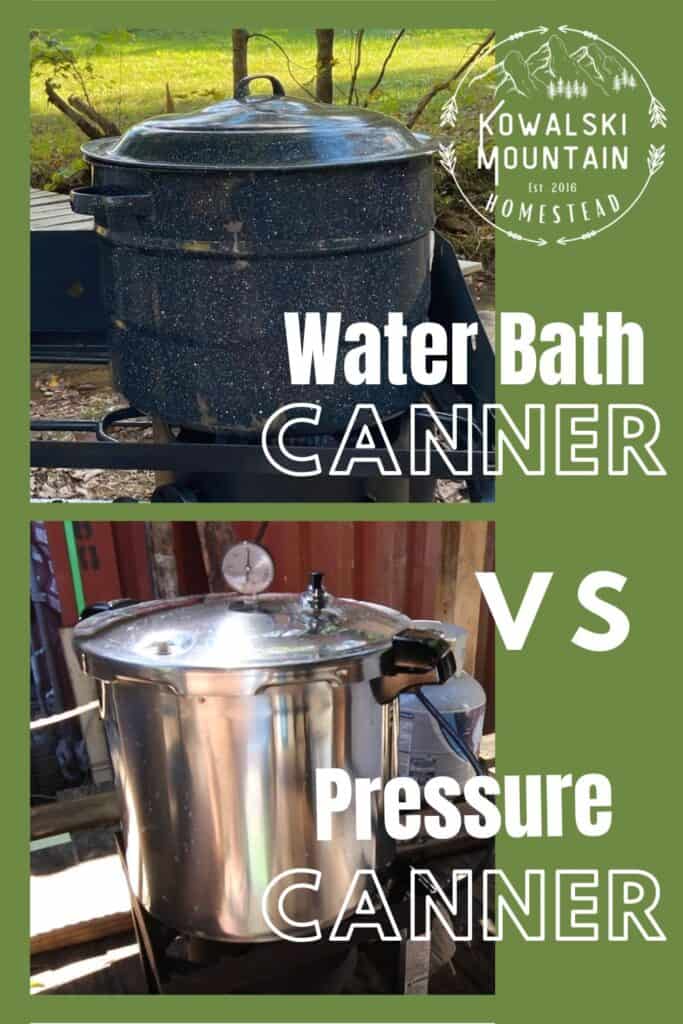
Preserving food through canning is a time-honored tradition that allows us to enjoy the flavors of fresh produce all year round. Whether you’re a seasoned canner or just starting out, understanding the differences between water bath canning and pressure canning is essential for successful food preservation. Water bath canning is suitable for high-acid foods, such as fruits and pickles, while pressure canning is necessary for low-acid foods like meats and vegetables. By exploring the unique processes and equipment required for each method, we can make informed decisions about the best preservation technique for our favorite recipes. Feasting on homemade jams, salsas, and stews is just a canning session away!
The Importance Of Canning For Food Preservation
Canning is a crucial method for food preservation, allowing us to extend the shelf life of fresh produce and enjoy their flavors even when they are out of season. By canning, we can harness the nutrients and flavors of fruits, vegetables, and even meats, ensuring they are available year-round. It provides a way to store food in a safe manner, preventing spoilage and reducing waste. Canning also allows us to support local farmers by preserving excess produce and reducing dependence on imported foods. Additionally, it gives us control over the ingredients and additives that go into our preserved foods, promoting healthier eating habits.
The Difference Between Water Bath Canning And Pressure Canning
Water bath canning and pressure canning are two different methods of food preservation. Water bath canning is suitable for high-acid foods, such as fruits, jams, and pickles. It involves placing jars of food in a large pot of boiling water and processing them for a specified time. This method uses the heat of boiling water to kill microorganisms and create a seal.
On the other hand, pressure canning is used for low-acid foods, including vegetables, meats, and soups. It requires a specialized pressure canner that uses steam and builds pressure to reach higher temperatures. The high heat inside the canner kills harmful bacteria, spores, and enzymes, ensuring safe preservation.
It is important to choose the appropriate canning method depending on the acidity level of the food to ensure proper food safety and preservation.
Water Bath Canning
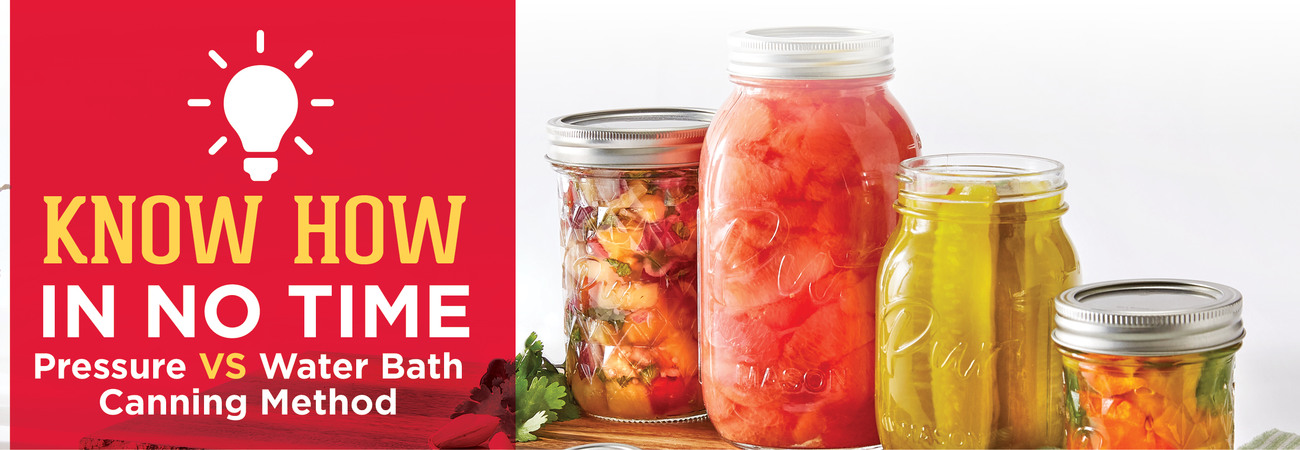
Water bath canning is a popular method of food preservation, particularly for high-acid foods. This process involves placing jars of food in a large pot of boiling water and processing them for a specific time period. The heat from the boiling water kills any microorganisms and creates an airtight seal on the jars. This method is suitable for fruits, jams, pickles, and other high-acid foods. It is relatively simple and requires basic equipment such as a canner, jars, lids, and a jar lifter. However, it is important to note that low-acid foods should not be water bath canned, as they require the higher temperatures of pressure canning.
Process And Equipment Needed For Water Bath Canning
To begin water bath canning, you will need a large pot with a rack designed for canning. This pot should be deep enough to fully immerse the jars in water. Other essential equipment for water bath canning includes canning jars, lids, and rings, a jar lifter to safely remove hot jars, a funnel for filling the jars, and a bubble remover tool or non-metallic spatula to remove air bubbles from the jars. Additionally, a timer, tongs, and a ladle are useful for the canning process. It is important to ensure that all equipment is clean and in good condition before starting the canning process.
Types Of Foods Suitable For Water Bath Canning
Foods that are high in acidity are generally suitable for water bath canning. This includes fruits such as apples, peaches, berries, and citrus fruits, as well as tomatoes. Acidic foods have a pH level of 4.6 or below, which creates an environment that can prevent the growth of harmful bacteria. It’s important to note that vegetables and low-acid foods, such as meat and poultry, are not suitable for water bath canning and should be processed using pressure canning instead.
Benefits And Limitations Of Water Bath Canning
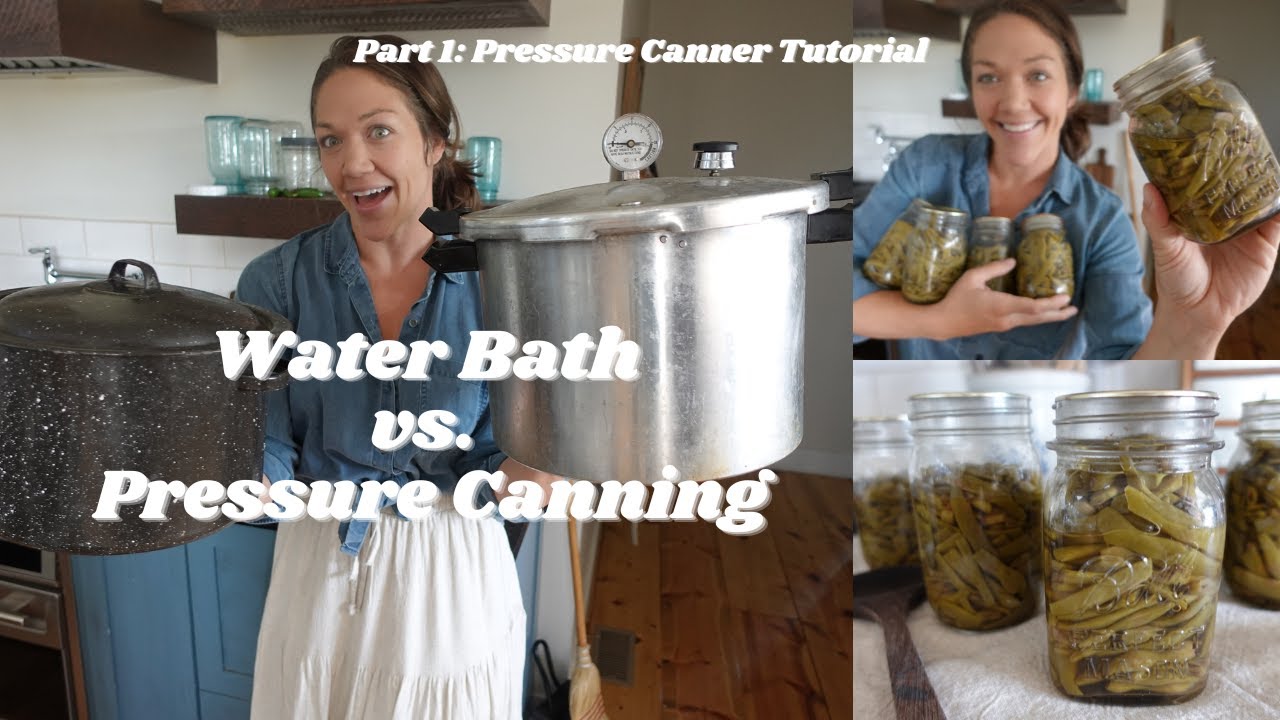
Water bath canning offers several benefits, including its simplicity and affordability. It requires basic equipment such as a large pot with a lid and a rack to keep the jars elevated. Water bath canning is also suitable for high-acid foods, which are often flavorful fruits and tomatoes. On the other hand, water bath canning has limitations. It is not safe for low-acid foods like vegetables and meats, which require higher temperatures to kill harmful bacteria. Additionally, the water bath method does not penetrate and evenly distribute heat throughout the jars as effectively as pressure canning.
Advantages Of Water Bath Canning
Water bath canning offers several advantages for home food preservation. Firstly, it is a simple and affordable method that requires basic equipment such as a large pot with a lid and a rack. This makes it accessible for beginners or those with limited resources. Secondly, water bath canning is suitable for high-acid foods, including flavorful fruits and tomatoes. It allows you to preserve jams, jellies, pickles, and other acidic products with ease. Lastly, water bath canning preserves the natural colors and textures of the food, resulting in visually appealing jars that are perfect for gifts or personal use. It provides a satisfying way to preserve seasonal produce and enjoy homemade goodies all year round.
Foods That Should Not Be Water Bath Canned
Foods that have a low acid content and a pH level above 4.6 should not be water bath canned. These low acid foods include vegetables, meats, poultry, fish, and dairy products. Water bath canning alone is not sufficient to kill certain bacteria, such as Clostridium botulinum, that thrive in low acid environments. These bacteria produce a toxin that can cause botulism, a potentially fatal illness. To safely preserve these low acid foods, pressure canning is recommended as it reaches higher temperatures that can destroy harmful bacteria.
Pressure Canning

Pressure canning is a method used to safely preserve low acid foods. It involves using a pressure canner, which is a specialized appliance that uses heat and pressure to kill bacteria and create a sealed jar. The process begins by placing the jars filled with food and liquid in the canner. The canner is then sealed and heated, creating steam inside. As the pressure increases, the temperature also rises, reaching levels that can destroy harmful microorganisms. This method is essential for preserving vegetables, meats, poultry, fish, and dairy products. It ensures that the food remains safe and maintains its quality during storage.
Process And Equipment Needed For Pressure Canning
Pressure canning requires specialized equipment in order to safely preserve low acid foods. The process involves placing the filled jars of food and liquid inside a pressure canner. The canner is sealed to create a tight seal, and heat is applied to increase the pressure inside the canner. This increase in pressure allows the temperature to rise to levels that can effectively kill harmful bacteria. The pressure canner also has a pressure gauge or dial to accurately measure the pressure inside. It is important to follow the specific instructions for your pressure canner model to ensure the proper canning process.
Types Of Foods Suitable For Pressure Canning
Low acid foods with a pH greater than 4.6 are suitable for pressure canning. This method is necessary to safely preserve these foods due to their susceptibility to botulinum bacteria growth. Some examples of low acid foods that can be pressure canned include vegetables, meat, poultry, seafood, and soups. Pressure canning allows these foods to be safely preserved by reaching the high temperatures needed to destroy harmful bacteria. It is important to follow the specific guidelines for each type of food to ensure proper pressure canning processing times and pressures.
Benefits And Limitations Of Pressure Canning

Pressure canning offers several benefits for food preservation. Firstly, it allows for the safe preservation of low acid foods, such as vegetables, meat, poultry, seafood, and soups, by reaching the high temperatures needed to destroy harmful bacteria. Pressure canning also retains the nutritional value and flavor of the food better compared to other preservation methods. Additionally, pressure canning provides a longer shelf life for canned foods, allowing them to be stored for extended periods without compromising their quality.
However, pressure canning also has some limitations. It requires specific equipment, such as a pressure canner, which may be more expensive than a water bath canner. The process itself is more complex and time-consuming, as it involves strict pressure and processing time requirements for each type of food. It is crucial to follow the recommended guidelines and recipes to ensure safe and successful pressure canning. Overall, while pressure canning provides enhanced safety and preservation for low acid foods, it requires precision and attention to detail.
Advantages Of Pressure Canning
Pressure canning offers several advantages for food preservation. Firstly, it allows for the safe preservation of low acid foods by reaching high temperatures that can destroy harmful bacteria. This ensures that the canned food is safe to consume. Additionally, pressure canning retains the nutritional value and flavor of the food better compared to other preservation methods. The sealed jars created through pressure canning also provide a longer shelf life for the canned foods, allowing them to be stored for extended periods without compromising their quality. Overall, pressure canning is an effective method for preserving low acid foods and ensuring their safety and quality.
Foods That Should Only Be Pressure Canned
Foods that should only be pressure canned include low acid vegetables, meats, poultry, and seafood. The high levels of heat achieved during pressure canning are necessary to eliminate the risk of botulism, a potentially deadly form of food poisoning. Low acid foods such as green beans, carrots, corn, and meats have pH levels above 4.6, which makes them susceptible to bacterial growth. Pressure canning ensures that these foods reach the necessary temperature of 240°F (116°C) to destroy harmful bacteria and create a safe, shelf-stable product. It is important to follow proper procedures and guidelines to ensure the safety of pressure-canned foods.
Conclusion
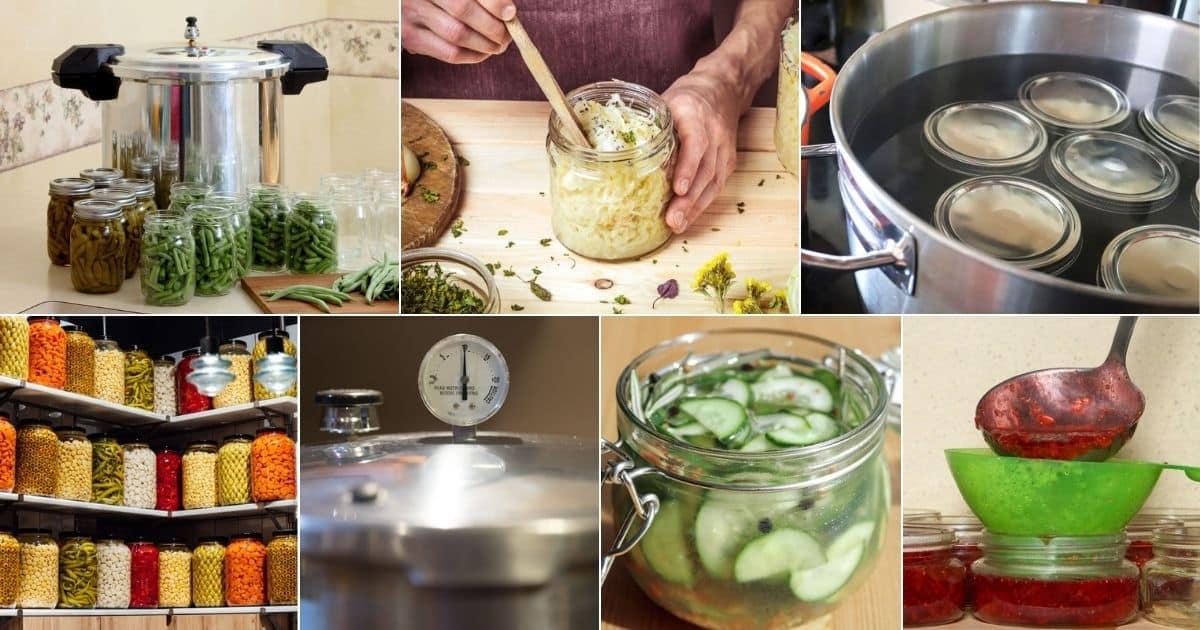
In conclusion, both water bath canning and pressure canning are effective methods of food preservation. The choice between the two methods depends on the type of food being canned and its acidity level. Water bath canning is suitable for high acid foods, such as fruits and pickles, while pressure canning is necessary for low acid foods, such as vegetables and meats. It is important to follow safety guidelines and proper procedures when canning to ensure the preservation of high-quality, safe, and flavorful foods. Whether you choose water bath canning or pressure canning, both methods can help you enjoy the taste of homemade preserved foods all year round.
Factors To Consider When Choosing Between Water Bath Canning And Pressure Canning
When deciding between water bath canning and pressure canning, there are several factors to consider.
- Acidity level of the food: Water bath canning is suitable for high acid foods, such as fruits and pickles, while pressure canning is necessary for low acid foods, like vegetables and meats.
- Time and convenience: Water bath canning is generally simpler and requires less equipment, making it a quicker and more convenient option. Pressure canning, on the other hand, requires additional equipment and time for proper processing.
- Shelf life: Pressure canning provides a longer shelf life and can preserve low acid foods for years, while water bath canning is recommended for shorter storage periods.
- Personal preferences: Some individuals may prefer the taste and texture of foods preserved through water bath canning, while others may enjoy the convenience and versatility of pressure-canned foods.
Ultimately, the choice between water bath canning and pressure canning depends on the type of food you want to preserve and your personal preferences regarding taste, convenience, and storage duration.
The Importance Of Following Safety Guidelines In Food Preservation
Following safety guidelines is crucial in food preservation to ensure the safety and quality of the preserved food. The guidelines outline proper techniques, processing times, and equipment required for canning. Adhering to these guidelines prevents the growth of harmful bacteria, such as Clostridium botulinum, which can cause serious illness or even death. It is important to remember that improper canning techniques can lead to the development of toxins in the food, making it unsafe for consumption. Therefore, it is essential to follow safety guidelines to protect yourself and others from potential foodborne illnesses.
FAQ: Water Bath Canning vs Pressure Canning
Q: What is water bath canning and pressure canning?
A: Water bath canning and pressure canning are two methods used for home food preservation. They both involve canning jars of food, but they differ in terms of the types of food they can safely process.
Q: When should I use water bath canning?
A: Water bath canning is recommended for high-acid foods such as fruits, pickles, jams, and jellies. The acidity level of these foods creates an environment that prevents the growth of harmful bacteria, making water bath canning an effective method to preserve them.
Q: When should I use pressure canning?
A: Pressure canning is necessary for low-acid foods such as vegetables, meat, poultry, and soups. Unlike high-acid foods, low-acid foods contain bacteria that can thrive in a water bath canner. Pressure canning uses high temperatures and pressure to destroy these bacteria and ensure safe preservation.
Q: Why can’t I use water bath canning for low-acid foods?
A: Low-acid foods require higher temperatures to kill harmful bacteria, spores, and toxins that may be present. Water bath canning cannot reach the necessary temperatures to prevent the growth of these harmful microorganisms, which is why it is vital to use pressure canning for these foods.
Q: What equipment do I need for water bath canning?
A: To perform water bath canning, you will need a large pot with a tight-fitting lid, a rack to keep the jars off the bottom of the pot, canning jars with lids and bands, jar lifter, canning funnel, and a bubble remover/headspace tool.
Q: What equipment do I need for pressure canning?
A: For pressure canning, you will need a pressure canner, which is a specialized pot designed to reach and maintain high temperatures and pressure. Additionally, you will need canning jars, lids, and bands, as well as a jar lifter, canning funnel, and a pressure gauge or dial to monitor the pressure during the process.
Q: Are there any safety precautions I should be aware of?
A: Absolutely! Safety is paramount when it comes to home canning to prevent the risk of foodborne illnesses. Follow tested and approved recipes, maintain cleanliness and hygiene throughout the process, and ensure your equipment is in good working condition. Properly sterilize your jars, lids, and bands, and always adhere to the recommended processing times, pressures, and temperatures specific to the food you are canning.
Q: Which method takes longer, water bath canning or pressure canning?
A: Generally, pressure canning takes longer than water bath canning. Pressure canning requires more time to reach and maintain the necessary temperatures and pressures for the safe preservation of low-acid foods. Water bath canning, on the other hand, relies on the natural acidity of certain foods and requires less time to process.
Q: Can I use either method interchangeably for all types of food?
A: No, it is crucial to use the appropriate canning method based on the acidity of the food being canned. Water bath canning is suitable for high-acid foods, while pressure canning is essential for low-acid foods. Failure to follow the correct method may compromise the quality and safety of the food.
In summary, water bath canning is suitable for high-acid foods like fruits and pickles, while pressure canning is necessary for low-acid foods such as vegetables, meat, and soups. It is vital to follow tested recipes and safety guidelines to ensure the safe preservation of your food.
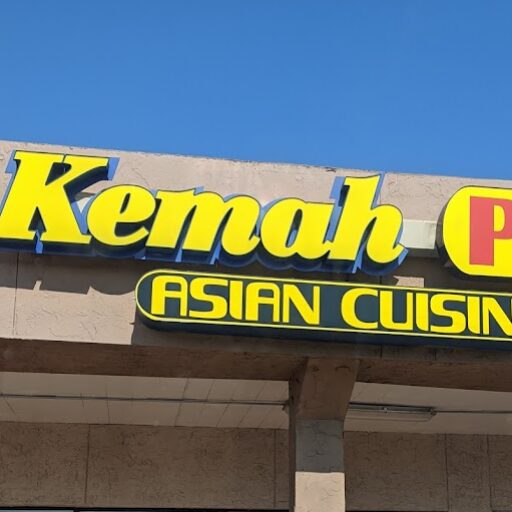
Kemah Cafe is a family-owned eatery that takes pride in offering a delightful array of Vietnamese, Chinese, and Thai dishes. Located at the heart of the community, Kemah Cafe has been serving up delicious Pho and other authentic Asian cuisine for many years. Founded with a passion for sharing the flavors of the East, Kemah Cafe has become a beloved culinary destination for locals and visitors alike. The warm and welcoming atmosphere of the cafe, combined with the tantalizing aromas of freshly prepared dishes, creates an unforgettable dining experience.